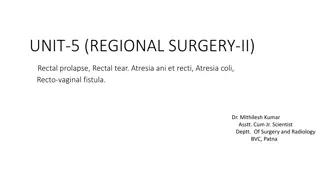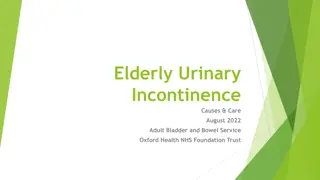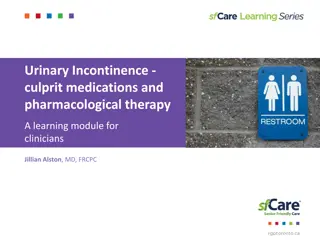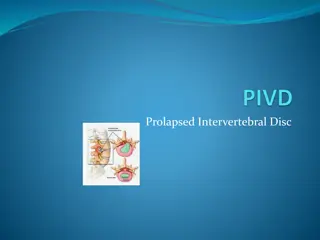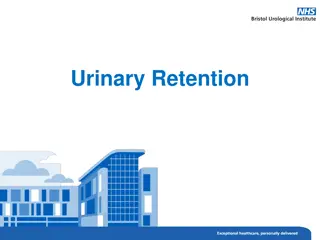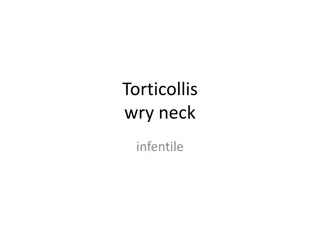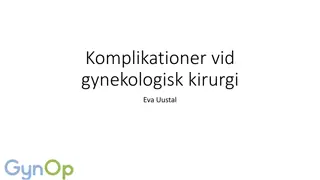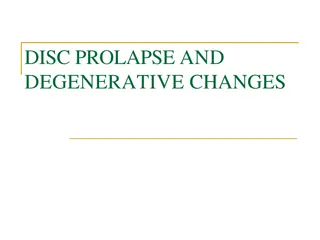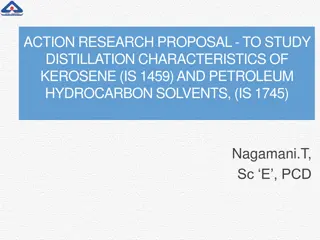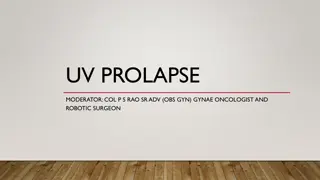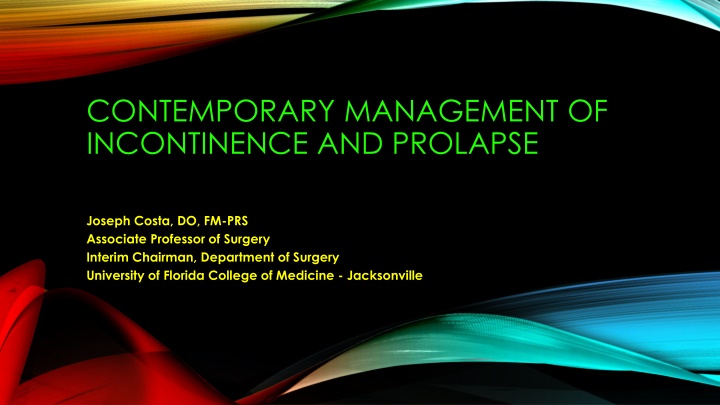
Management and Interventions for Urinary Incontinence and Prolapse
Learn about contemporary approaches to managing urinary incontinence and prolapse, including medication options, surgical indications, and pelvic organ prolapse interventions. Explore the prevalence of different types of incontinence, gender breakdowns, and related conditions. Gain insights into lower urinary tract symptoms and overactive bladder prevalence across racial/ethnic groups and ages.
Download Presentation

Please find below an Image/Link to download the presentation.
The content on the website is provided AS IS for your information and personal use only. It may not be sold, licensed, or shared on other websites without obtaining consent from the author. If you encounter any issues during the download, it is possible that the publisher has removed the file from their server.
You are allowed to download the files provided on this website for personal or commercial use, subject to the condition that they are used lawfully. All files are the property of their respective owners.
The content on the website is provided AS IS for your information and personal use only. It may not be sold, licensed, or shared on other websites without obtaining consent from the author.
E N D
Presentation Transcript
CONTEMPORARY MANAGEMENT OF INCONTINENCE AND PROLAPSE Joseph Costa, DO, FM-PRS Associate Professor of Surgery Interim Chairman, Department of Surgery University of Florida College of Medicine - Jacksonville
LEARNING OBJECTIVES Distinguish unique characteristics of current medications for over active bladder. Identify indication for surgical intervention for over active bladder. Identify interventions for pelvic organ prolapse.
URINARY INCONTINENCE The involuntary loss of urine: Immediate desire to urinate precedes involuntary loss = URGE Forceful pressure, (e.g. cough, sneeze, mad at husband) = STRESS Combination of the above types = MIXED INCONTINENCE
URINARY INCONTINENCE Incontinence Incontinence by type Urge Stress Mixed Prevalence Gender/Ethnicity breakdown Related Conditions BPH , male sypmtoms AUA score / IPSS Irritative voiding symptoms Female vaginal prolapse UDI-6 IIQ-7
INCONTINENCE GENDER BREAKDOWN National Health and Nutrition Survey 2008 4,229 Women 33% = 1,396 of group surveyed Incontinent Women by AGE Prevalence of Incontinence 50% or above group pure stress incontinence 20-39 YRS 36% 34% Mixed incontinence 40-59 YRS 28% 16% Urge incontinence 60-AND OLDER YRS 36% SUI 2.5x higher risk in White or Mexican American women vs. Black J Urol. 2008 Feb;179(2):656-61. Epub 2007 Dec 21. Urinary incontinence prevalence: results from the National Health and Nutrition Examination Survey. Dooley Y1, Kenton K, Cao G, Luke A, Durazo-Arvizu R, Kramer H, Brubaker L.
NEUROUROL URODYN. 2013 MAR;32(3):230-7. THE PREVALENCE OF LOWER URINARY TRACT SYMPTOMS (LUTS) AND OVERACTIVE BLADDER (OAB) BY RACIAL/ETHNIC GROUP AND AGE: RESULTS FROM OAB-POLL. COYNE KS1, SEXTON CC, BELL JA, THOMPSON CL, DMOCHOWSKI R, BAVENDAM T, CHEN CI, QUENTIN CLEMENS J. 10,000 men and women surveyed between age 18-70 yrs Men n = 4,977 ; Women n = 5,023 2,000 African American ; 2,000 Hispanic ; 6,000 Caucasion 5,700 people responded Men = 25% Men = 8% AA Men = 10% v. 6% AA Women = 19% v. 16% Women = 50% Women = 30% Overactive Bladder : Urge Incontinent Often: Ethnicity:
PELVIC ORGAN PROLAPSE Prolapse Type Anterior Posterior compartment Total
High Grade Stage III or IV Low Grade Stage I or II
PREVALENCE OF POP, IRISH STUDY Int Urogynecol J. 2014 Nov;25(11):1463-70. 2014 Apr 16. Prevalence, etiology and risk factors of pelvic organ prolapse in premenopausal primiparous women. Durnea CM1, Khashan AS, Kenny LC, Durnea UA, Smyth MM, O'Reilly BA. n = 202 Irish women > 1yr after delivery of first child POP Q staging system Uterine = 89% Cystocele = 90% 65% Had at least POPQ Stage II Disease C Section protects for C ystocele and Rectocele Significant Type III Collagen, varicose veins, asthma, hypermobile joints Rectocele = 70%
RISK OF SURGICAL REPAIR FOR POP Obstet Gynecol. 2010 Nov;116(5):1096-100. Lifetime risk of undergoing surgery for pelvic organ prolapse. Smith FJ1, Holman CD, Moorin RE, Tsokos N 1981-2005 almost 45,000 surgical cases reviewed Age of risk calculated if life lived to 85 yrs Risk of surgery for pelvic organ prolapse during female s life = 19%
PHARMACOLOGIC INTERVENTION Traditional Later Gen Newer selective Traditional anticholinergic medications most likely to be generic Later generation anticholinergic medications Newer, selective medications Botulinum toxin Oxybutynin (IR and ER) Solefenicin Mirabegron Hyoscyamine Darefenicin Botulinum toxin A Tolterodine Fesoterodine Trospium Chloride
OLDER GENERATION AGENTS Higher side effect profile Highest drop out rate. Oxybutynin IR 80% over one year Most likely to be on best tear for patient insurance Beware generic ER drugs that typically have engineered release capsules
SECOND GENERATION ANTI-MUSCARINICS More selective for bladder predominant receptors Less Side Effects!! More likely to have engineered capsules Daily Dosing or Patch !! Less likely to behave like generic form of medications Technology Patents don t expire like drug formulas !!
MODERN ANTICHOLINERGIC THERAPY RESPONSE Significant decrease in number voids per day (1-3) Significant increase in volume voided Significant decrease in incontinent episodes , approximately 5 per week Better response rate with concommitent pelvic floor exercises Nabi G, et al. (2006). Anticholinergic drugs versus placebo for overactive bladder syndrome in adults. Cochrane Database of Systematic Reviews. Alhasso AA, et al. (2006). Anticholinergic drugs versus non-drug active therapies for overactive bladder syndrome in adults. Cochrane Database of Systematic Reviews.
NEWER AGENTS FOR OVERACTIVE BLADDER Mirabegron Metabolized by CYPD2D6 Beta 3 AGONIST Increases bladder capacity Should have less side effect profile due to non-muscarinic MOA May cause or exacerbate Hypertension Botulinum Toxin A200 Units1 Bladder volume 145mls at 4 weeks Bladder volume 90mls at 12 weeks Significant improvement in QOL 1. Arun Sahai, Mohammad Shamim Khan, Prokar Dasgupta, GKT Botulinum Study Group Efficacy of Botulinum Toxin-A for Treating Idiopathic Detrusor Overactivity: Results From a Single Center, Randomized, Double-Blind, Placebo Controlled Trial June 2007Volume 177, Issue 6, Pages 2231 2236
J UROL. 2006 MAR;175(3 PT 1):999-1004;. SAFETY AND TOLERABILITY OF TOLTERODINE FOR THE TREATMENT OF OVERACTIVE BLADDER IN MEN WITH BLADDER OUTLET OBSTRUCTION. ABRAMS P1, KAPLAN S, DE KONING GANS HJ, MILLARD R.. Men WITH obstruction ; > 40 yrs of age ; n=149 Tolterodine BID ; n=70 placebo Urodynamically demonstrated efficacy in Drug vs. Placebo p< 0.003 Post void residual significantly greater Drug vs. Placebo +25 mls average No significant difference in adverse events
WHEN MEDICAL MANAGEMENT FAILS Obstruction Overactive Bladder Prolapse Prior Sling Surgery Botox Injection Male: Transurethral resection Neuromodulation
PROLAPSE WHEN MEDICAL MANAGEMENT FAILS Incontinence Obstruction Pessary Prolapse Repair Sling Surgery
TAKE HOME POINTS Generic agents for OAB have greater side effects therefore higher drop out rate Patents for pill technology do NOT EXPIRE like those for drug formulation Generic form not always going to behave the same if capsule is engineered Men can be safely treated for OAB 33% of men may have OAB or incontinence of urine 19% of women have a lifetime risk of surgery for pelvic organ prolapse There are interventions after failed medical intervention, encourage patients to see their Urologist


